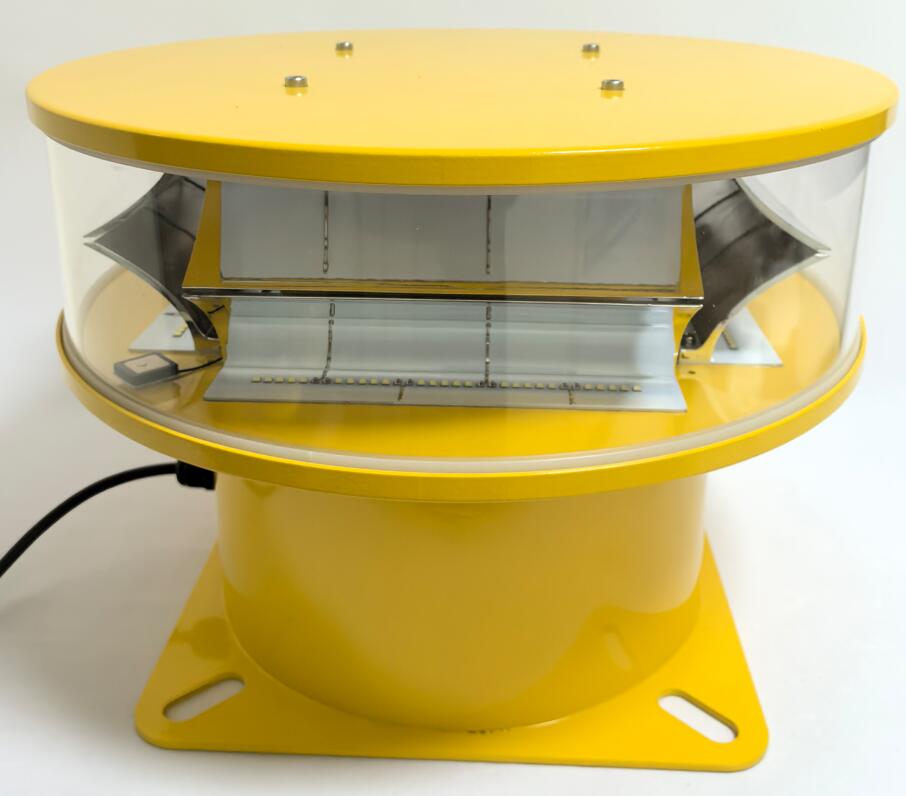In our vertically expanding world where skyscrapers pierce clouds and wind turbines dot landscapes, the invisible threat to aviation safety grows proportionally. Aviation obstruction lights serve as the critical interface between human engineering and flight safety, creating a visible language that pilots understand instinctively. These unassuming beacons work tirelessly to prevent catastrophic collisions, forming an essential part of global aviation infrastructure.
This article explores the evolving technology, regulatory framework, and innovative applications of aviation obstruction lights in modern airspace management.
The Critical Role of Aviation Obstruction Lights
Modern airspace presents complex challenges with:
Over 500,000 registered obstructions worldwide requiring marking

Increasing urban density creating "canyons" for helicopter operations
Renewable energy installations expanding into flight paths
Aviation obstruction lights address these challenges through:
Visual Warning System - Providing immediate spatial awareness to pilots in VFR conditions
| aviation obstruction lights |
Regulatory Compliance - Meeting ICAO Annex 14 and FAA AC 70/7460 standards
All-Weather Reliability - Maintaining visibility in precipitation, fog, and darkness
Technology Behind Modern Aviation Obstruction Lights
The evolution from incandescent to smart lighting systems has revolutionized obstruction marking:
Core Technologies:
LED Revolution - Offering 50,000+ hour lifespans with 80% energy reduction
| aviation obstruction light |
Adaptive Intensity Control - Automatic brightness adjustment based on ambient conditions
Wireless Synchronization - Enabling precise flash patterns across multiple structures
Emerging Innovations:
Li-Fi Enabled Lights - Potential for data transmission to aircraft
Predictive Maintenance Systems - AI-driven failure anticipation
"Dark Sky" compliant designs minimizing light pollution
Global Standards and Implementation
The international framework governing aviation obstruction lights creates a unified safety language:
Key Regulatory Bodies:
ICAO (International Civil Aviation Organization)
FAA (Federal Aviation Administration)
EASA (European Union Aviation Safety Agency)
Implementation Challenges:
Harmonizing standards across jurisdictions
Balancing safety with environmental concerns
Managing ever-growing obstacle databases
Specialized Applications
Beyond traditional uses, aviation obstruction lights now protect:
1. Offshore Wind Farms
Unique challenges of marine environments
Specialized corrosion-resistant designs
Marine navigation coordination requirements
2. Urban Air Mobility Infrastructure
Vertiport marking for eVTOL operations
Dynamic lighting systems for dense urban areas
Integration with drone traffic management
3. Temporary Obstruction Marking
Mobile lighting systems for construction cranes
Rapid-deployment solutions for disaster areas
Event-specific aerial hazard marking
Future Trends in Obstruction Lighting
The next generation of aviation obstruction lights will feature:
Integrated Surveillance Systems - Combining lighting with ADS-B technology
Biomimetic Designs - Mimicking firefly light patterns for better recognition
Self-Powered Units - Advanced solar and kinetic energy harvesting
Augmented Reality Integration - Visual overlay systems for pilot displays
As our built environment continues its upward trajectory, aviation obstruction lights remain the unsung heroes of flight safety. Their continuous evolution from simple beacons to intelligent safety systems reflects the aviation industry's commitment to zero-collision objectives. The future will demand even smarter, more sustainable solutions as urban air mobility and renewable energy projects reshape our skylines.
The silent flashes of aviation obstruction lights will continue to guard our airways, ensuring that humanity's structures and aircraft can safely coexist in shared airspace. Their importance can only grow as we enter an era of more complex aerial ecosystems and denser air traffic patterns.